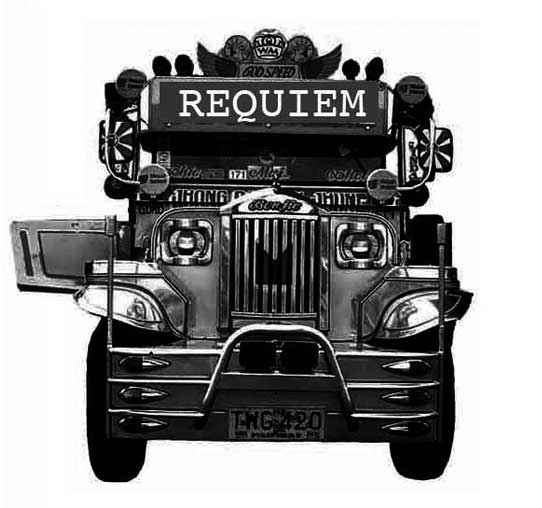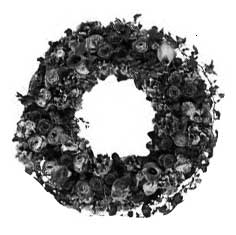
The Jeepney |
Is the King dead? |
The jeepney was once considered "the undisputed king of the road." Are his days really counted? Is the King dying? Is his demise inevitable? Plans are to "pull the plug" in January. Is there no other alternative for this king? Can he be retired, instead, to a more honorable station, rather than the perdition of junkyards? Some were quite old and battered pieces of geriatric metalworks. Some were veritable works of art. Strutting pieces of metal artwork. The art of the color. The art of the borloloy. I ventured to say that in a country devoid of any populist program of art, where art is the indulgence of the literati and the burgis, jeepney art is probably the sole venue for expression of true proletarian art. Yes, folk art. Mobile art. Graffiti on wheels. People's art. Masa art. No two were alike. Every jeepney had a story to tell. Shells collaged and grafittied with art, graphics, religious quotes and invocations. Dashboards cluttered with masa religiosity---rosaries, icons of Jesus, the Virgin, and saints. Some spewing with passion and attitude. It has long survived s political assassinations and government bullying, long threatened by alternative surplus vans from Japan, further decimated by air-conditioned share-taxis and vans. Indeed, for the past few years I have noticed the works of art slowly disappearing from the roads, the head-turners becoming rare delights. Just drab metal works continuing to eke a living for as long as they can. Years ago, i wrote: Anachronistic, yes. Cultural demise, no. . . It is part of the cultural DNA, of its folklore, of the Filipino psyche, of its history, of a time that was. And whether in its drab and generic utilitarian form or in its accessory-laden gleaming shell of buffed stainless steel, it will forever celebrate something uniquely Filipino. Despite its clunky and dreadful aerodynamics, I thought they would be around forever. Alas, now, jeepneys 15 years and older are doomed to forced retirement and oblivion of junkyard ignominy. And, woe to the drivers and owners: "If you can't modernize that, leave. You're poor? Son of a bitch, go ahead, suffer in poverty and hunger, I don't care." Caught in the crossfire of antiquation, a malignant traffic problem, chronic smoke belchers, ubers and grabs, and hundreds of thousands of OFW vehicles, in a bottleneck of impotent solutions, the jeepney is again being bullied into submission. In the name of modernization, we must witness the killing of a Filipino icon, that which was once the quintessence of the masa art and integral part of its cultural landscape.Rest in peace, King. |
Godofredo U. Stuart October 19, 2017 |

